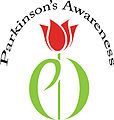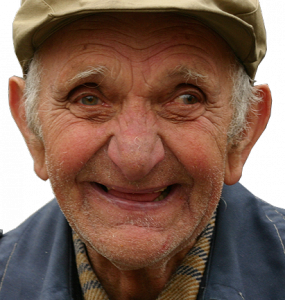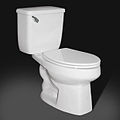 PARKINSON’S DISEASE (PD) is a progressive (gets worse over time) disease. When I try to explain PD to both my patients and their loved ones, I often use the analogy of gasoline and how a car performs based on the quality and quantity of gas. There is a special chemical in the brain (dopamine) that essentially makes the muscles work in harmony to create orchestrated movements. Dopamine is the gasoline that makes our muscles (the car) operate/function with smooth, fluid and COORDINATED movements. Just like a car, if you put the low grade or poor quality gasoline in the car, the car will essentially run but the engine might sputter and run slower. If you don’t keep a functional level (quantity) of gas in the car, eventually it will stop running.
PARKINSON’S DISEASE (PD) is a progressive (gets worse over time) disease. When I try to explain PD to both my patients and their loved ones, I often use the analogy of gasoline and how a car performs based on the quality and quantity of gas. There is a special chemical in the brain (dopamine) that essentially makes the muscles work in harmony to create orchestrated movements. Dopamine is the gasoline that makes our muscles (the car) operate/function with smooth, fluid and COORDINATED movements. Just like a car, if you put the low grade or poor quality gasoline in the car, the car will essentially run but the engine might sputter and run slower. If you don’t keep a functional level (quantity) of gas in the car, eventually it will stop running.
Early Signs Parkinson Disease
Early signs/symptoms of Parkinsons can be very subtle. For example, having difficulty hearing what your loved one is saying. Developing a soft, spoken voice over a period of time that is not usually how your loved one talks, can be an early sign/symptom of PD. If you have a harder time determining your loved one’s emotional state (happy, sad, angry) because they do not change their facial expressions, the tone of voice, or pitch of voice, this could be an early sign of Parkinson disease. Sometimes, a resting tremor is noticed, but tremors are a common sign/symptom of different problems (reaction to medication, an elevated emotional state–“literally shaking because you are extremely mad, excited, scared), disorders, and tremors are not always present in the early stages of PD. Increased falling, tripping, and difficulty walking (dragging of the feet or shuffling) and taking longer to stand up, get in/out of bed, or start to walk after standing up, are other signs of PD in the early stages. Generally, patients DO NOT have memory problems but dementia can be present.
Remember, Parkinson’s Disease is progressive and there is no CURE at this time. Every patient is unique and can demonstrate different combinations and degree of severity of symptoms, but there are several common signs/symptoms of Parkinson Disease or Parkinson-like disorders.
- Rigidity – stiffness in the arms, legs, and neck muscles
- Bradykinesia – slow, often uncoordinated movements of the arms, legs and neck
- Resting tremors – jumping/shaking of the arms, legs and sometimes the head/neck muscles that are more pronounced when the patient is not using the arms, legs or neck for an intentional movement.
- Poor posture – stooped or crouched posture in standing and when walking
Poor Quality vs Poor Quantity
There are different types of Parkinson’s Disease.

LOW Quality
In the first scenario, there is plenty of gas but the quality is poor. Similarly, this is a type of PD where the brain still has cells producing DOPAMINE but the quality is very poor.
In the second scenario, -there is no gas in the tank (poor quantity)-essentially the cells responsible for producing DOPAMINE are no longer operating and DOPAMINE is not being made so the muscles stop (become rigid).

LOW Quantity
Parkinson Disease Symptom Explanation
As mentioned earlier, DOPAMINE is a special chemical that makes the muscles throughout the body work in symphony together to create fluid, coordinated and smooth movements. When the brain does not produce enough or good quality dopamine, it is like having an orchestra without the music conductor–the louder instruments overpower the softer instruments–and the musical results are choppy, uncoordinated, and chaotic. Similarly, without the positive influence of dopamine in the body, the bigger/more dominant muscles over power the smaller/weaker muscles resulting in tremors (a power struggle between the strong and weak muscles), rigidity (the stronger muscles “bully”and essentially over power the weaker muscles), walking deviations (freezing, bradykinesia, festination), and other symptoms such as a masked facial expression, soft-spoken voice, drooling, urine/bowel incontinence, and emotional changes like depression, fear and anxiety.

SMILE !!!
Smiling and changing the pitch/volume of the voice to express excitement, fear, anger and sadness require numerous muscles working together in harmony. DOPAMINE is the chemical responsible for harmony between the agonist (stronger/dominant) muscles and the antagonist (smaller/weaker) muscles. Without dopamine smiling, talking with changes in pitch/volume is difficult and the face looks like the patient put on a “mask” because the facial expressions are frozen in place.
Understanding the symptoms and some of the techniques used by Physical Therapists to manage falls, improve slow/uncoordinated muscle movements, and promote standing balance stability can be helpful.
Helpful Tips for Parkinson Disease
Physical Therapy can help patients manage some of the symptoms of Parkinson’s Disease with gait training, balance interventions, exercises, and transfer training techniques. As the disease progressively gets worse, walking can be very difficult. Sometimes the patient will be walking and just “freeze” in place. Generally, the patient is going through doors, hallways or going from one type of floor surface (carpet) onto a different type of flooring (vinyl). Furthermore, darker and busy-type patterns can cause the patient to “freeze.” Having a uniform-type flooring throughout the home and avoiding busy patterns (floral, geometric shapes, and bright color variations) can decrease freezing episodes.
In addition, understanding which muscles are smaller/weaker–like the ones responsible for picking the toes up when walking–compared to which muscles are larger/stronger–like the ones responsible for picking up the heels when walking, will help you understand why it is important to focus on strengthening the weaker muscles. Strengthening the weaker muscles will reduce the progression of symptoms that occur when the stronger muscles overpower the weaker muscles (Do standing toe raises).

Time Sensitive
When a patient with Parkinson’s exercises, I remind him/her of the importance of frequent rests. I tell my patients their energy storage is similar to a toilet. When a toilet is flushed, you have to wait for a sufficient amount of time for the tank to completely fill before you can flush it again. If you wait for a short period of time and flush the toilet, it will flush but with less force and might not clear the bowl. If you continually flush the toilet over and over again, the tank never fills so nothing happens–you have to wait before you flush again and get a successful result. Similarly, patients with Parkinson’s Disease require frequent and sometimes prolonged rests depending on: 1) the level of exertion required to complete an activity, 2) intensity of the treatment, and 3) the patient’s tolerance to treatment interventions. Without sufficient rests, the patient will be just like an over-flushed toilet and nothing of benefit will result from his/her continued effort. Furthermore, specialized transfer and bed mobility training is important and can be used to strengthen, promote balance, and decrease slow position transitions (i.e. sit to/from standing, sit to/from lying down).
New Treatment Parkinson Disease…LSVT/Big Loud Parkinson Disease
Research and technology have improved the treatment of Parkinson’s Disease. Medical advances, potential stem-cell research, and unique-PD specific rehabilitation are improving the care, management and rate of progressive decline in patients with Parkinson’s Disease. I highly recommend watching this YouTube video of a unique type of Physical Therapy known as BIG & LOUD for Parkinson’s also known as LSVT BIG. This diagnosis-specific type of Physical Therapy is both new and effective in the treatment of Parkinson’s and Parkinson’s-type disorders.
The BIG portion of the BIG & LOUD program focuses on using large movements and specific patterns to improve coordination, balance and reduce slow movements. The LOUD portion of the program is focused on improving a patient’s speech, coordination for effective swallowing, and decrease hypophonia (soft-spoken verbalization). If you are interested or would like more information on the BIG & LOUD Parkinson program, CLICK the links below.
| LSVT/BIG for Parkinson Disease | LSVT/LOUD for Parkinson Disease |
|---|---|
|
|
|

